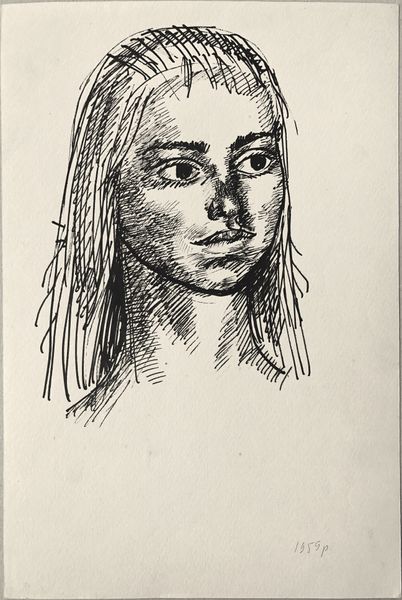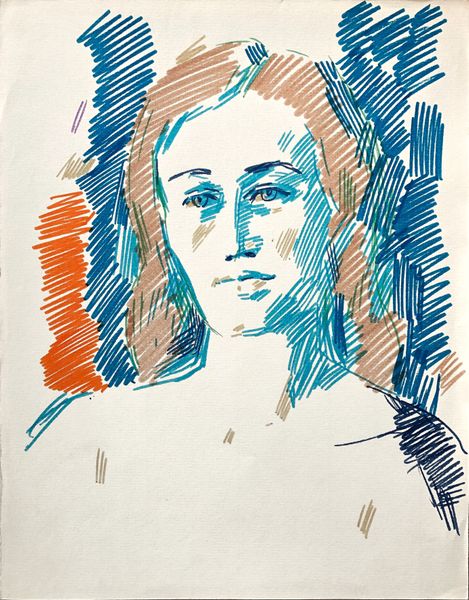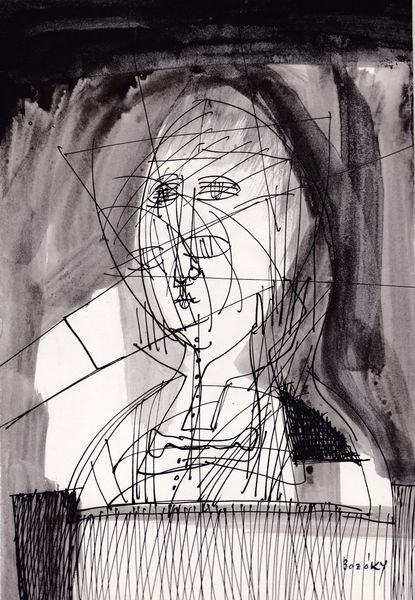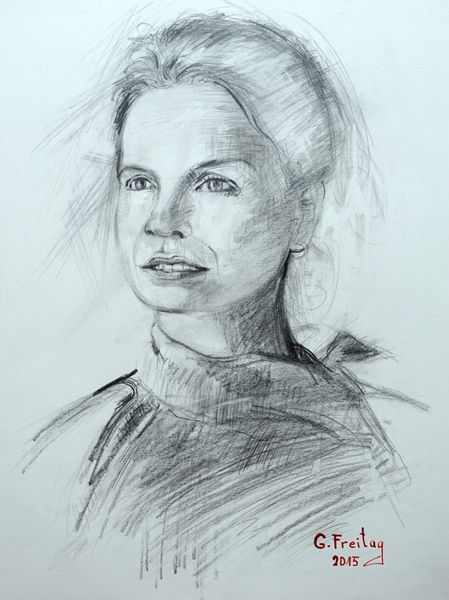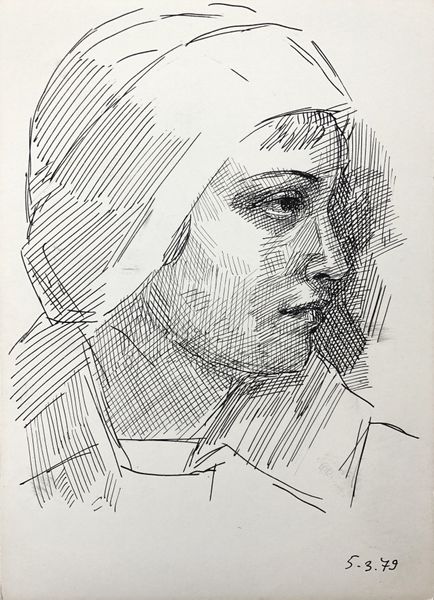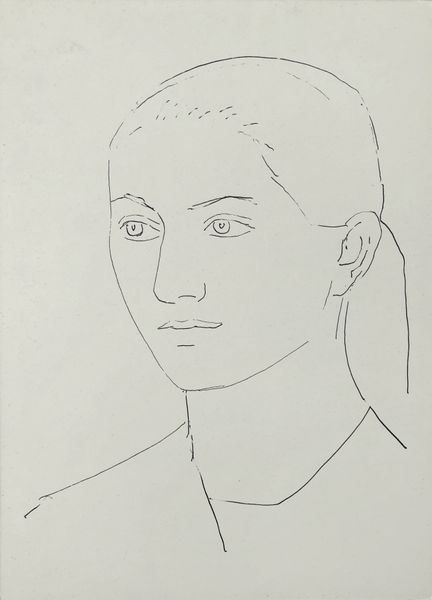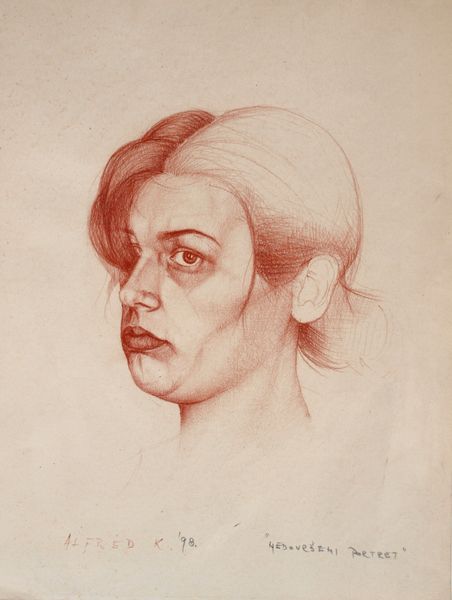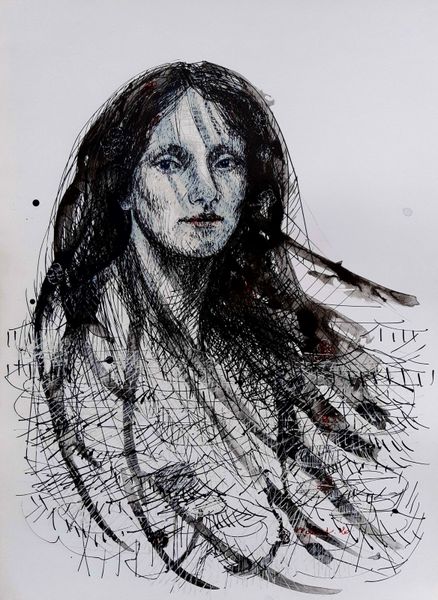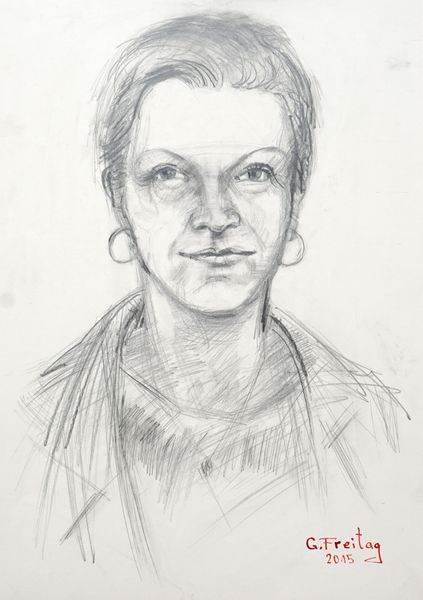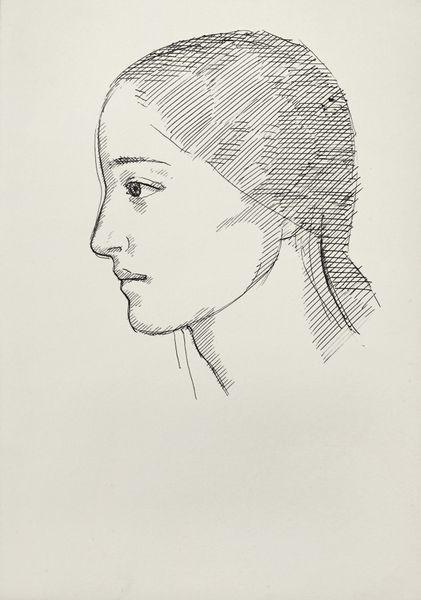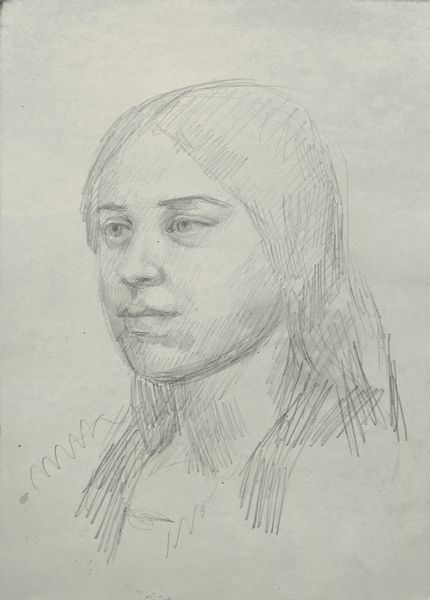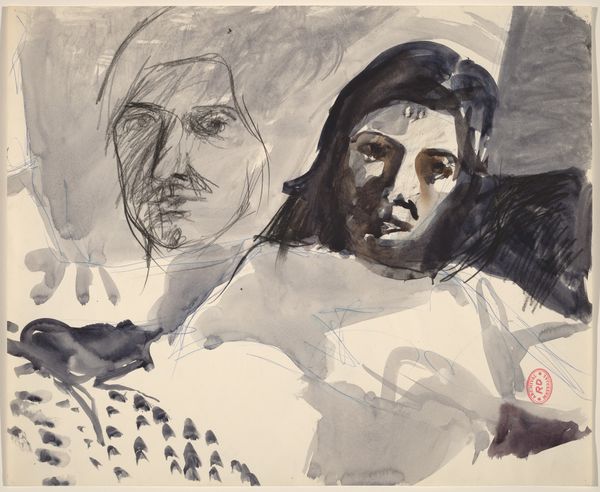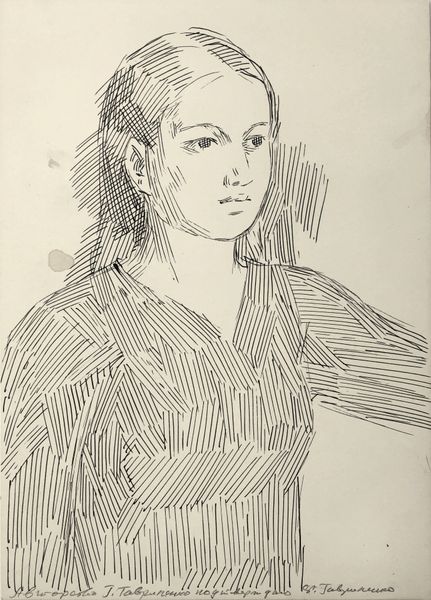
drawing, paper, ink
#
portrait
#
drawing
#
paper
#
ink
#
line
#
portrait drawing
#
portrait art
#
modernism
#
realism
Dimensions: 50 x 40 cm
Copyright: Creative Commons NonCommercial
Curator: Today, we’re exploring Alfred Freddy Krupa's “Two is One,” an ink drawing on paper completed in 2014. Editor: My first impression is one of fragmentation; a cubist sensibility presented in stark, almost clinical, monochrome. Curator: The portrait certainly lends itself to deconstruction. Consider Krupa's approach: how does the artist grapple with identity through the lens of modernism? It evokes a sense of alienation perhaps reflecting on broader sociopolitical tensions? Editor: The interplay of line is very engaging, but the drawing stops short of completely fracturing. Observe how each seemingly disparate fragment—the ear, the gaze, the slope of a neck—is meticulously delineated through line and shading; distinct units that nevertheless coalesce. Semiotically, we can read each shape to decode and understand the message transmitted by this singular entity, portrait of a fragmented woman. Curator: Absolutely. Krupa, an artist from Croatia with a profound engagement in postwar art theory, presents here more than just a depiction; his choice of subject reflects an exploration of selfhood influenced by the collective experiences and struggles in the region and its people. Do you see the emotional distance, and consider how such a distance mirrors the human responses to prolonged conflict? Editor: Yes, I can observe a studied dispassion at work. It’s most evident in the eyes of the sitter; there is something unsettling and impersonal in the representation. We can almost see a scientific exercise playing out using ink and paper. Curator: In his style, the work engages directly with critical reflections regarding female roles and identities. Krupa’s subjects aren’t passively observed but critically assessed, pushing for narratives that highlight individual autonomy, social engagement, and at times, a kind of defiant self-preservation. Editor: Interesting. While I was absorbed by its technique and aesthetic values, your historical lens gives the image a very moving and timely inflection. Curator: And your formal analysis provides an excellent language for describing what makes this artwork more than just another pretty picture; instead, it becomes an inquiry into modern womanhood and personhood.
Comments
No comments
Be the first to comment and join the conversation on the ultimate creative platform.
